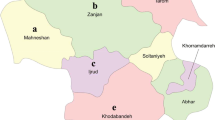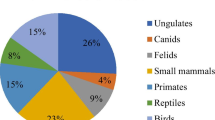Abstract
Frequent mortality of Lesser Flamingo (Phoeniconaias minor) in East African alkaline saline lakes is a tragedy to the conservation of this nearly threatened species of birds. The objective of this study was to investigate the cause of Lesser Flamingo mortality in Lake Manyara during August 2008 and to determine if microcystins were involved. Pathological, microbiological and microcystin analysis was done to 11 Lesser Flamingo carcasses using standard procedures. It was found that carcasses were emaciated, the visceral organs were enlarged, haemorrhagic and the livers had nodular lesions. Tissue histopathological sections revealed that there was diffuse chronic inflammation, perisinusoidal haemorrhages, portal mononuclear cell infiltrations, necrosis and degenerative changes in the liver. Corynebacteria spp., Pasteurella multocida, Proteus spp. and Escherichia coli were isolated from the visceral organs in all carcasses. All the Lesser Flamingo carcasses contained detectable levels of microcystins. Three microcystin variants: MC-LR, -YR and -RR were detected with MC-LR having a concentration of 22 ± 16 μg/g wet weight in livers. Low concentrations of microcystins were detected in the kidneys, lungs and heart samples. Simultaneously, the high concentrations of microcystins in the livers together with the opportunistic bacterial infections could synergistically have caused effects to the stressed Lesser Flamingo which lead to their mortality.




Similar content being viewed by others
References
Alonso-Andicoberry, C., L. Garcia-Villada, V. Lopez-rodas & E. Costas, 2002. Catastrophic mortality in flamingos in a Spanish national park caused by cyanobacteria. Veterinary Record 151: 706–707.
Ballot, A., L. Krienitz, K. Kotut, C. Wiegand, J. S. Metcalf, G. A. Codd & S. Pflugmacher, 2004. Cyanobacteria and cyanobacterial toxins in three alkaline Rift Valley lakes of Kenya—Lakes Bogoria, Nakuru and Elmentaita. Journal of Plankton Research 26: 925–935.
Ballot, A., K. Kotut, E. Novelo & L. Krienitz, 2009. Changes of phytoplankton communities in Lakes Naivasha and Oloidien, examples of degradation and salinization of lakes in the Kenyan Rift Valley. Hydrobiologia 632: 359–363.
Bangert, R. L., B. R. Cho, P. R. Widders, E. H. Stauber & A. C. S. WardSource, 1988. A survey of aerobic bacteria and fungi in the feces of healthy psittacine birds. Avian Diseases 32: 46–52.
Bucher, E. H., 1992. Population and conservation status of flamingo in Mar Chiquita, Cordoba, Argentina. Colon. Waterbirds 15: 179–184.
Carmichael, W. W. & R. H. Li, 2006. Cyanobacteria toxins in the Salton Sea. Saline Ecosystem 2: 5.
Carmichael, W. W., M. F. O. Sandra, J. S. A. Azevedo, J. R. Renato, E. M. J. Molica, L. Sharon, L. R. Kenneth, R. S. Glen & K. E. Geoff, 2001. Human fatalities from cyanobacteria: chemical and biological evidence for cyanotoxins. Environmental Health Perspectives 109: 663–668.
Carter, G. R. & D. J. Wise, 2004. Essentials of Veterinary Bacteriology and Mycology, 6th ed. Wiley-Blackwell, Hoboken, NJ: 290. ISBN: 978-0-8138-1179-6.
Childress, B., S. Nagy, & B. Hughes (Compilers), 2008. International Single Species Action Plan for the Conservation of the Lesser Flamingo (Phoeniconaias minor). CMS Technical Series No. 18, AEWA Technical Series No. 34. Bonn, Germany.
Codd, G. A., J. S. Metcalf, L. F. Morrison, L. Krienitz, A. Ballot, S. Pflugmacher, C. Wiegand & K. Kotut, 2003. Susceptibility of flamingos to cyanobacterial toxins via feeding. Veterinary Record 152: 722–723.
Foster, G., H. M. Ross, T. W. Pennycott, G. F. Hopkins & I. M. Mclaren, 1998. Isolation of Escherichia coli 086:K61 producing cyto-lethal distending toxin from wild birds of the finch family. Letters in Applied Microbiology 26: 395–398.
Fyumagwa, R., D. J. Mpanduji, R. H. Mdegela, S. S. Mkumbo, A. Nyaki, R. Hoare, Z. Bugwesa & S. Pflugmacher, 2007. Detection of cynobacterial toxins in tissues of Lesser Flamingos from Empakaai Crater, Lake Manyara and Lake Natron in Northern Tanzania. Proceedings of the Sixth TAWIRI Scientific Conference, 3rd–6th December 2007. Arusha International Conference Centre, Arusha, Tanzania: 288–298.
Githaiga, J. M., 2003. Factors influencing interlake movements and utilization patterns of the alkaline lakes in Kenya by Lesser Flamingo. PhD thesis. University of Nairobi, Nairobi.
Goyache, J., A. I. Vela, M. D. Collins, C. Ballesteros, V. Briones, J. Moreno, P. Yorio, L. Domínguez, R. Hutson & J. F. Fernández-Garayzábal, 2003. Corynehacterium spheniscorum sp. nov., 385. isolated from the cloacae of wild penguins. International Journal of Systematic and Evolutionary Microbiology 53: 43–46.
Hammer, U. T., J. Shamess & R. C. Haynes, 1983. The distribution and abundance of algae in saline lakes of Saskatchewan, Canada. Hydrobiologia 105: 1–26.
Ibelings, B. W. & I. Chorus, 2007. Accumulation of cyanobacterial toxins in freshwater “seafood” and its consequences for public health: a review. Environmental Pollution 150: 177–192.
IUCN 2006. Red List of Threatened Species. Available at http://www.iucnredlist.org/details/144723. Accessed on 6 April 2011.
Kaaya, L. T., 2007. Phytoplankton diversity and productivity with emphasis on the bloom dynamics of the potentially toxic cyanobacterium Arthrospira fusiformis in Lake Momela, Arusha, Tanzania. MSc Thesis, University of Dar es salaam, Tanzania 78 pp.
Kairu, J. K., 1996. Heavy metals residue in birds of Lake Nakuru, Kenya. African Journal of Ecology 34: 397–400.
Kihwele, E. S., 2010. Seasonal variations in the abundance of Lesser Flamingos (Phoeniconaiais minor) in relation to some limnological parameters in Lake Manyara, Tanzania. MSc Thesis, University of Dar es salaam, Tanzania.
Kock, N. D., R. A. Kock, J. Wambua, G. J. Kamau & K. Mohan, 1999. Mycobacterium avium related epizootic in free ranging Lesser Flamingos. Kenya Journal of Wildlife Diseases 35: 297–300.
Koenig, R., 2006. The pink death: die-offs of the Lesser Flamingo raise concern. Science 313: 1724–1725.
Kotut, K., A. Ballot & L. Krienitz, 2006. Toxic cyanobacteria and their toxins in standing waters of Kenya: implications for water resource use. Journal of Water and Health 4: 233–245.
Krienitz, L. & K. Kotut, 2010. Fluctuating algal food populations and the occurrence of Lesser Flamingos (Phoeniconaias minor) in three Kenyan rift valley lakes. Journal of Phycology 46: 1088–1096.
Krienitz, L., A. Ballot, K. Kotut, C. Wiegand, S. Pütz, J. S. Metcalf, G. A. Codd & S. Pflugmacher, 2003. Contribution of hot spring cyanobacteria to the mysterious deaths of Lesser Flamingos at Lake Bogoria, Kenya. FEMS Microbiology Ecology 43: 141–148.
Krienitz, L., A. Ballot, P. Casper, G. A. Codd, K. Kotut, J. S. Metcalf, L. F. Morrison, S. Pflugmacher & C. Wiegand, 2005. Contribution of toxic cyanobacteria to massive deaths of Lesser Flamingos at saline-alkaline lakes of Kenya. Verhandlungen des Internationalen Vereins für Theoretische und Angewandte Limnologie 29: 783–786.
Lugomela, C., H. B. Pratap & Y. D. Mgaya, 2006. Cyanobacteria blooms—A possible cause of mass mortality of Lesser Flamingos in Lake Manyara and Lake Big Momela, Tanzania. Harmful Algae 5: 534–541.
Martins, J. C. & V. M. Vasconcelos, 2009. Microcystin dynamics in aquatic organisms. Journal of Toxicology and Environmental Health Part B 12: 65–82.
Melack, J. M., 1988. Primary producer dynamics associated with evaporative concentration in a shallow, equatorial soda lake (Lake Elementaita, Kenya). Hydrobiologia 158: 1–14.
Motelin, G., R. Thampy, & D. Doros, 2000. An ecotoxicological study of the potential roles of metals, pesticides and algal toxins on the 1993/5 Lesser Flamingo mass die-offs in Lakes Bogoria and Nakuru, Kenya; and the health status of the same species of birds in the Rift Valley Lakes during the 1990s. Proceedings of the East African Environmental Forum, Nairobi, May 2000: 11–12.
Ndetei, R. & V. S. Muhandiki, 2005. Mortalities of Lesser Flamingos in Kenyan Rift Valley saline lakes and the implications for sustainable management of the lakes. Lakes and Reservoirs: Research Management 10: 51–58.
Neffling, M. R., E. Lance & J. Meriluoto, 2010. Detection of free and covalently bound microcystins in animal tissues by liquid chromatography–tandem mass spectrometry. Environmental Pollution 158: 948–952.
Nelson, Y. M., R. J. Thampy, G. K. Motellin, J. A. Raini, C. J. Disante & L. W. Lion, 1998. Model for trace metal exposure in filter feeding flamingo at an alkaline rift valley lake, Kenya. Environmental Toxicology and Chemistry 17: 2302–2309.
Oberholster, P. J., A. M. Botha & J. U. Grobbelaar, 2004. Microcystis aeruginosa: source of toxic microcystins in drinking water. African Journal of Biotechnology 3: 159–168.
Owino, A. O., J. O. Oyugi, O. O. Nasirwa & L. A. Bennun, 2001. Patterns of variation in waterbird numbers on four Rift Valley lakes in Kenya, 1991–1999. Hydrobiologia 458: 45–53.
Pedersen, K., H. H. Dietz, J. C. Jørgensen, T. K. Christensen, T. Bregnballe & T. H. Andersen, 2003. Pasteurella multocida from outbreaks of Avian Cholera in wild and captive birds in Denmark. Journal of Wildlife Diseases 39: 808–816.
Rohde, R., & T. Hilhorst, 2001. A profile of environmental change in the Lake Manyara Basin, Tanzania. Issue Paper 109, Dry lands Programme, IIED. http://www.ntz.info/docs/b00833-dry_ip109eng.pdf. Accessed on 13 March 2011.
Romanowska-Duda, Z., J. Mankiewicz, M. Tarczynska, Z. Walter & M. Zalewski, 2002. The effect of toxic cyanobacteria (blue-green algae) on water plants and animal cells. Polish Journal of Environmental Studies 11: 561–566.
Sileo, L., J. G. Grootenhuise, G. H. Tuite & H. D. Hopcraft, 1979. Microbacteriosis in the Lesser Flamingo of Lake Nakuru, Kenya. Journal of Wildlife Diseases 15: 387–390.
Ton, T., 2007. Pink starvation: flamingos in Africa malnourished. Epoch Times. Available at: http://en.epochtimes.com/news/7-1-23/50812.html. Accessed on 31 March 2011.
Tuite, C. H., 1979. Population size, distribution and biomass density of the Lesser Flamingo in the Eastern Rift Valley, 1974–76. Journal of Applied Ecology 16: 765–775.
Tuite, C. H. 1981. Standing crop densities and distribution of Spirulina and benthic diatoms in East African alkaline saline lakes. Freshwater Biology 11: 345–360.
Vareschi, E., 1978. The ecology of Lake Nakuru (Kenya) I. Abundance and feeding of the Lesser Flamingo. Oecologia 32: 11–35.
Vareschi, E., 1979. The ecology of Lake Nakuru (Kenya). II. Biomass and spatial distribution of fish (Tilapia grahami Boulenger = Sarotherodon alcalicus graham Boulenger). Oecologia 37: 321–335.
Vareschi, E., 1982. The ecology of Lake Nakuru (Kenya) III Abiotic factors and primary production. Oecologia 55: 81–101.
Williams, D. E., M. Craig, T. L. Mccready, S. C. Dawe, M. L. Kent, C. F. Holmes & R. J. Andersen, 1997. Evidence for a covalently bound form of microcystin-LR in salmon liver and dungeness crab larvae. Chemical Research in Toxicology 10: 463–469.
WWF–LNCDP (World Wide Fund for Nature–Lake Nakuru Conservation and Development Project), 1994. Annual Report. WWF–LNCDP, Nakuru, Kenya.
Yoshida, T., Y. Makita, S. Nagata, T. Tsutsumi, F. Yoshida, M. Sekijima, S. I. Tamura & Y. Ueno, 1997. Acute oral toxicity of microcystin-LR, a cyanobacterial hepatotoxin, in mice. Natural Toxins 5: 91–95.
Acknowledgments
This study was kindly supported by The Norwegian Programme for Development, Research and Higher Education (NUFU) PRO 07/10224. Sokoine University of Agriculture (SUA), Norwegian School of Veterinary Science (NVH) and National Veterinary Institute, Norway (NVI) played a facilitation role while the permission to conduct this study was granted by Tanzania Wildlife Research Institute (TAWIRI). We thank the Director General of Tanzania National Parks (TANAPA). The kind assistance received from the Chief Park Warden at Lake Manyara National Park is highly acknowledged. Dr. Peter L.M. Msoffe is acknowledged for participating during hard field work and kind donation of his Flu Detect™ Avian Influenza Type A Antigen Test Kits to be used during this project. For field help, many thanks to: Mr. Emilian S. Kihwele, Ruben A. Lyimo, Kelvin Nkulila, Konnah, Makingi and many other staff at Lake Manyara National park.
Author information
Authors and Affiliations
Corresponding author
Additional information
Handling editor: Stuart Anthony Halse
Rights and permissions
About this article
Cite this article
Nonga, H.E., Sandvik, M., Miles, C.O. et al. Possible involvement of microcystins in the unexplained mass mortalities of Lesser Flamingo (Phoeniconaias minor Geoffroy) at Lake Manyara in Tanzania. Hydrobiologia 678, 167–178 (2011). https://doi.org/10.1007/s10750-011-0844-8
Received:
Revised:
Accepted:
Published:
Issue Date:
DOI: https://doi.org/10.1007/s10750-011-0844-8




